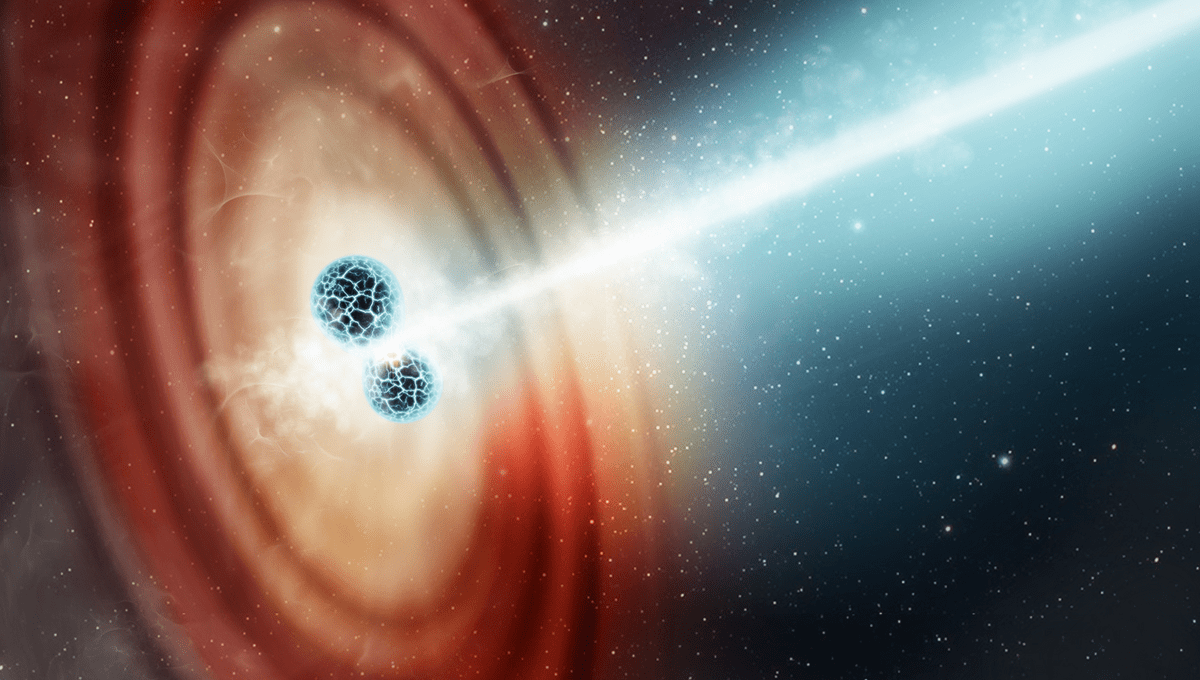
A jet of material released by the neutron star collision GW170817 is traveling at 99.97 percent of the speed of light and manages to appear as if it is breaking the laws of physics by traveling seven times faster. The jet was seen by the Hubble and Gaia space telescopes in the days shortly after the collision, but it has taken five years for the images to be processed and analyzed sufficiently to reveal what is going on.
GW170817’s detection, the first neutron star merger observed, transformed astronomy. It marked the first time when gravitational wave detectors and telescopes operating in the electromagnetic spectrum collaborated to study the same incident, and 70 observatories took part. The collaboration was beyond worldwide – instruments in space were also seconded from whatever they were doing to capture any photons they could.
The combination of the masses of the two neutron stars created an object so dense it collapsed into a black hole, which pulled material from the vicinity into a rapidly-spinning disk, whose poles released powerful jets. An analysis of these jets in Nature reveals how closely they approached light speed, but scientific research often operates at a statelier pace, and the work has only been published now. In the process, the authors support the hypothesis that gamma-ray bursts are a consequence of neutron star mergers.
The paper’s authors combined data produced by Hubble and Gaia eight and 159 days after the collision, with radio studies taken at 75 and 230 days. The radio wavelength observations were made with telescopes working together over thousands of kilometers using Very Long Baseline Interferometry (VLBI).
“I’m amazed that Hubble could give us such a precise measurement, which rivals the precision achieved by powerful radio VLBI telescopes spread across the globe,” Dr Kunal Mooley of CalTech said in a statement.
The measurements from Hubble were precise, but initially appear nonsensical, since they show the jet moving seven times the speed of light. Much as science fiction has got us used to concepts like “warp speed five”, light speed remains an unbreachable barrier. Going even 7 percent over, let alone seven times, would shake physics to its core.
However, this is not the first time astronomers have seen apparently “superluminal” motion, and they understand its cause. One jet is pointed almost towards Earth, so light emitted as it extends has a shorter distance to travel to reach us. The delay between when the light is emitted from the jet’s leading edge and its point of origin is disguised creating an illusion of faster-than-light travel. By measuring the gap between how fast the jet appears to be traveling, and its maximum possible speed, the authors were able to calculate the angle of the jet relative to Earth as between 19 and 25 degrees. This in turn helped them estimate how close to the speed of light the jet really is.
“Our result indicates that the jet was moving at least at 99.97% the speed of light when it was launched,” Dr Wenbin Lu of the University of California, Berkeley said.
Gamma-ray bursts are so powerful astronomers were initially puzzled as to what could create them. Jets produced by neutron star mergers became a favored explanation, but it is only now we can confirm such jets exist and are fast enough to produce the bursts.
As the paper notes, this work is only the beginning, The JWST will be able to view events like this with a precision that far exceeds Hubble’s.
The study is published in Nature (open access).
Source Link: Illusion Makes Colliding Neutron Stars' Jet Appear Faster Than Speed Of Light